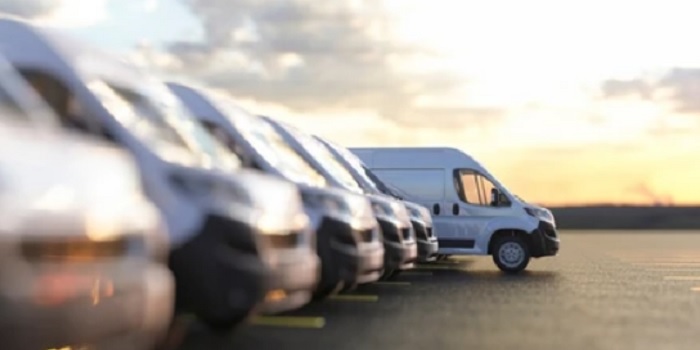Tips to lower emissions with sustainable fleet solutions in municipalities

The average fleet vehicle travels about 22,000 miles annually, producing around 6.17 tons of carbon dioxide emissions each year. With transportation accounting for nearly 28% of all greenhouse gas emissions in the United States, lowering these emissions requires significant changes.
By Executive Order, federal vehicle acquisitions are to be 100% zero-emission vehicles by 2035, starting with light-duty vehicles in 2027. Many states and cities have similar emission targets. As municipalities look to reduce their carbon footprint and put in place a more sustainable fleet, they need to take proactive steps. Here are a few tips to get you started.
Tip #1: Right-size your fleet
One of the most impactful ways to reduce a fleet's emissions is to right-size the number and types of vehicles. Regular utilization studies can uncover inefficiencies and ensure that the fleet aligns closely with usage needs.
Eliminating underused or unused vehicles through rightsizing reduces excess emissions, maintenance costs, and capital expenses. Municipalities should also closely analyze data to identify fleet optimization opportunities. This data can help you make decisions about which vehicles to retire as you transition to a more sustainable fleet. Secondary pool sedans, light trucks, and cargo vans are often underutilized and may be prime targets for retirement or replacement.
Tip #2: Unlock insights with quality data
Installing fleet telematics can track vehicle performance metrics beyond mileage. You can remotely track engine health, along with aggressive driving, inefficient routing, and idling. Poor performance by drivers can be slated for training on more eco-friendly habits.
By tracking fleet performance against baselines, you can demonstrate the impact of your fleet practices. Some municipalities offer incentives to fleet drivers and mechanics when fuel economy targets are hit as extra encouragement.
Tip #3: Reduce idling
Every gallon of gas burned produces twenty pounds of greenhouse gases, and one wasteful habit is idling. Idling for more than ten seconds uses more gas than shutting down and restarting. Telematics in vehicles can provide real-time visibility to remind drivers when idling hits specific levels to encourage positive driving habits.
Anti-idling policies and signage can help remind drivers of the environmental impact, while idle-reduction technology like automatic engine shut-offs can make a significant difference.
Tip #4: Implement proactive maintenance
Poorly maintained vehicles emit more. By closely monitoring vehicle and engine health and scheduling preventative maintenance, you can make sure your fleet is performing properly. Preventative maintenance, such as regular schedules for oil changes, air filter replacements, and fuel injection cleaning, can prevent poor performance.
Many fleet managers employ real-time diagnostics that provide early alerts for low battery voltage, carbon build-up, or poor tire pressure. Under-inflated tires can lower gas mileage by .2% for every PSI drop.
Tip #5: Electrify your fleet
Electrifying your fleet is a proven way to dramatically reduce emissions. EVs do not produce any emissions in operation. They also have lower operating costs, which can offset the higher price of procurement.
Hybrid vehicles are significantly more fuel efficient, reducing emissions by about a third compared to internal combustion engine vehicles.
Many municipalities have set target dates for transitioning to zero-emission vehicles and have already begun this transition phase. As vehicles need replacement, give strong consideration to hybrid and EVs for a more environmentally friendly municipal fleet.
Tip #6: Use route optimization
More efficient planning of routes reduces mileage driving. Route optimization software can help create routes designed to reduce the number of miles driven, accounting for distance, traffic patterns, and vehicle capacity.
Load optimization also improves fuel efficiency by reducing empty miles and balancing loads. Even small improvements over time can significantly lower miles and emissions fleetwide.
Tip #7: Promote vehicle sharing
Encourage workers to share rides where possible on the job. For example, if several employees are going to the same meeting, ask them to ride together rather than take separate vehicles. Carpooling to meetings, training, or events can lower emissions and reduce wear and tear on vehicles. You can also replace in-person meetings with virtual meetings when possible.
How Sourcewell can help you transition to a sustainable fleet
Sourcewell makes it easy to procure hybrid and EVs, charging infrastructure, telematics, vehicle services, and software with data analytics. Cooperative purchasing agreements combine the bulk buying power of government agencies and educational institutions to create greater savings.
Competitively sourced, ready-to-use contracts can accelerate the purchasing process, meeting compliance standards for government procurement. To help you transition to a more sustainable fleet, Sourcewell can help with procurement and provide significant cost savings.
By leveraging data and telematics, a fleet manager can identify areas for sustainability improvement by reducing a fleet's energy consumption and carbon emissions. Sourcewell contracts ensure that government entities can take the first step in supporting these initiatives. See how Sourcewell can help with your cooperative purchasing.


